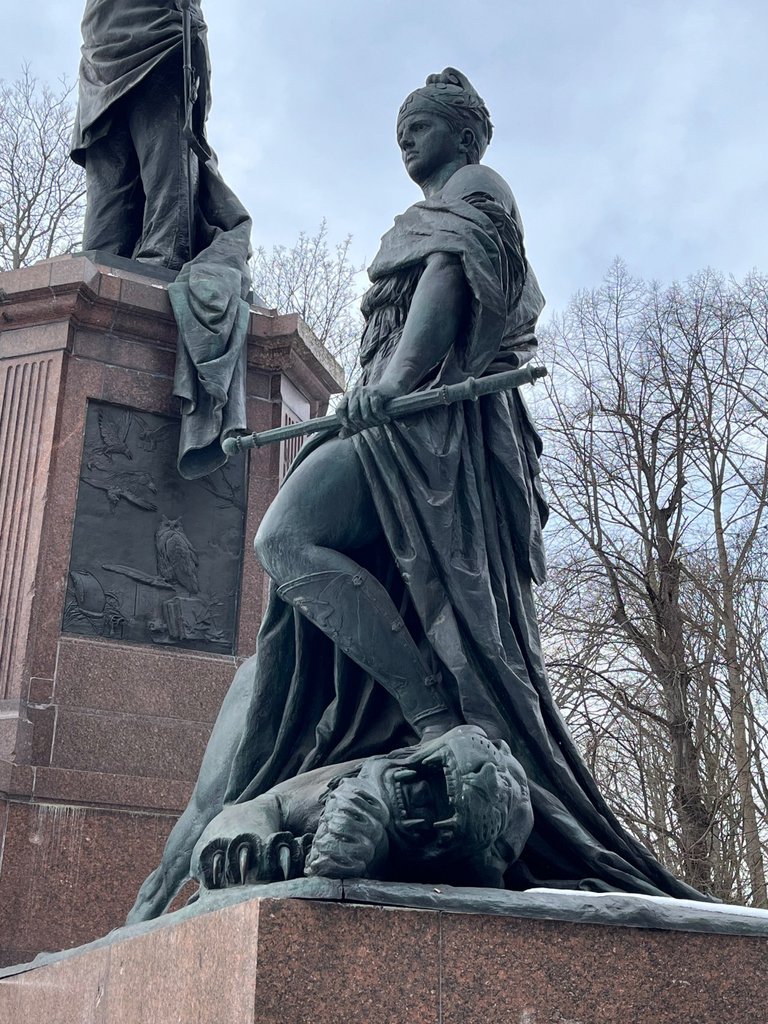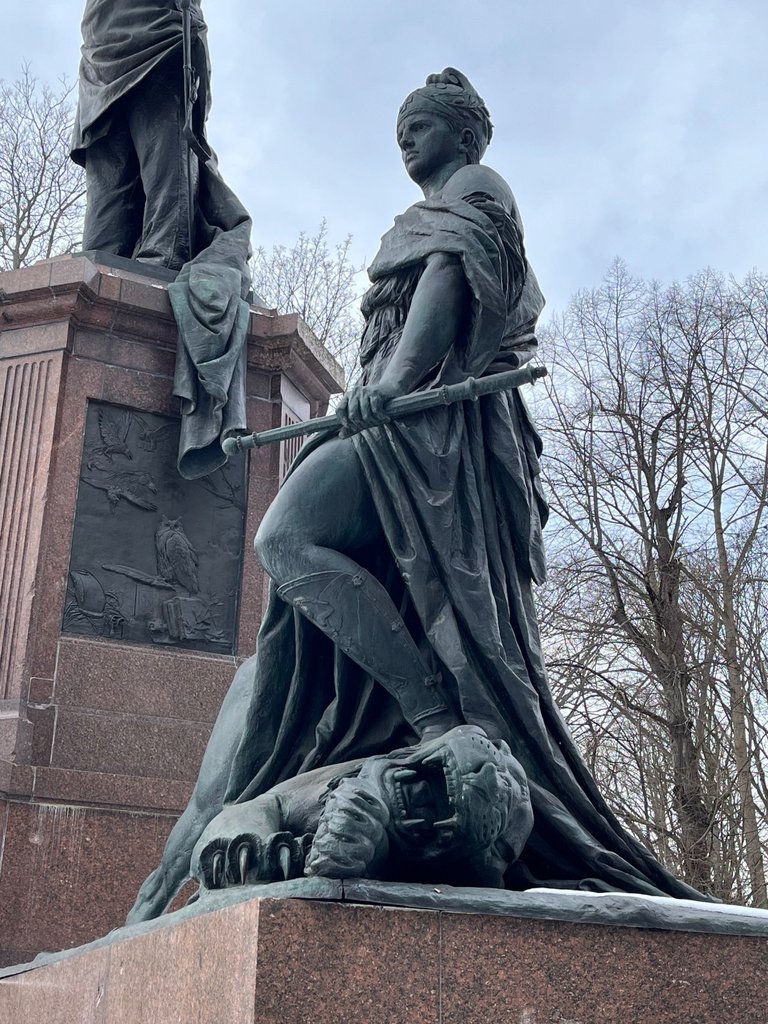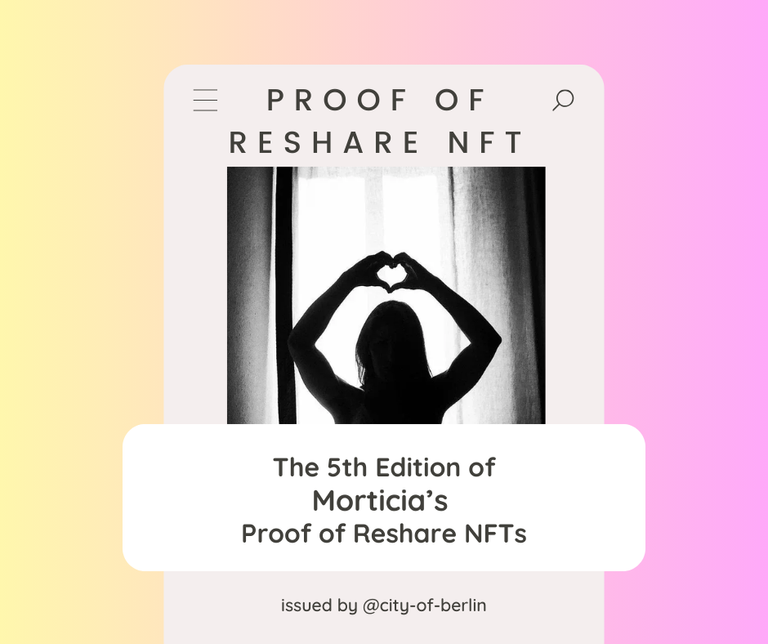Blog article series: The Bismarck National Monument Part 4: Germania
In our last blog article, we looked at the mysterious figure of the Sibyl on the Bismarck National Monument. In this installment, we turn our attention to Germania, the personified representation of Germany.
The embodiment of the nation
On the right side of the base, a female ruler with a sceptre and crown, presumably Germania or an allegory of state power, pushes down the leopard of discord and rebellion with her foot, symbolizing Bismarck's "indomitable power".

A proud and combative representation
The statue of Germania is made of bronze and shows the national allegory in a proud and combative pose. Her face is serious and her eyes gaze watchfully into the distance. The figure radiates a powerful and self-confident aura.
Symbolism and meaning
Germania embodies the ideals of German nationalism in the 19th century. She stands for the unity and strength of the German Empire, the willingness to defend the nation and pride in German culture and history.
A controversial symbol
The depiction of Germania was and still is the subject of controversy. During the National Socialist era, the figure was misused for propaganda purposes. In the present day, it is criticized by some as a symbol of nationalism and militarization.
A monument through the ages
The meaning of the Bismarck National Monument and its figures has changed over time. Germania, once a symbol of national pride, is now a memorial to the dangers of nationalism and an impetus for critical reflection on German history. In our next and final blog article in the series, we take a look at the figure of Siegfried and the significance of the monument as a whole.
Ciao Kakao
Your Morticia
P.S.: What is your opinion on the depiction of Germania on the Bismarck National Monument? Let me know in the comments!
Blog-Artikel-Serie: Das Bismarck-Nationaldenkmal Teil 4: Germania
In unserem letzten Blog-Artikel haben wir die geheimnisvolle Figur der Sibylle auf dem Bismarck-Nationaldenkmal beleuchtet. In dieser Folge widmen wir uns Germania, der personifizierten Darstellung Deutschlands.
Die Verkörperung der Nation

Auf der rechten Seite des Sockels stößt eine Herrscherin mit Zepter und Krone, vermutlich Germania oder eine Allegorie der Staatsmacht, den Leoparden der Zwietracht und des Aufruhrs mit dem Fuß nieder und symbolisiert damit Bismarcks "unbezwingbare Macht".
Eine stolze und kämpferische Darstellung
Die Statue der Germania ist aus Bronze gefertigt und zeigt die Nationalallegorie in einer stolzen und kämpferischen Pose. Ihr Gesicht ist ernst und ihre Augen blicken wachsam in die Ferne. Die Figur strahlt eine kraftvolle und selbstbewusste Ausstrahlung aus.
Symbolik und Bedeutung
Germania verkörpert die Ideale des deutschen Nationalismus im 19. Jahrhundert. Sie steht für die Einheit und die Stärke des Deutschen Reiches, die Bereitschaft, die Nation zu verteidigen, und den Stolz auf die deutsche Kultur und Geschichte.
Ein kontroverses Symbol
Die Darstellung der Germania war und ist bis heute Gegenstand von Kontroversen. In der Zeit des Nationalsozialismus wurde die Figur für Propagandazwecke missbraucht. In der Gegenwart wird sie von einigen als Symbol des Nationalismus und der Militarisierung kritisiert.
Ein Denkmal im Wandel der Zeit
Die Bedeutung des Bismarck-Nationaldenkmals und seiner Figuren hat sich im Laufe der Zeit gewandelt. Die Germania, die einst ein Symbol des Nationalstolzes war, ist heute ein Mahnmal für die Gefahren des Nationalismus und ein Anstoß zur kritischen Reflexion der deutschen Geschichte. In unserem nächsten und letzten Blog-Artikel der Serie werfen wir einen Blick auf die Figur des Siegfried und die Bedeutung des Denkmals als Ganzes.
Ciao Kakao
Eure Morticia
P.S.: Was ist eure Meinung zur Darstellung der Germania auf dem Bismarck-Nationaldenkmal? Lasst es mich in den Kommentaren wissen!
Links:
https://de.wikipedia.org/wiki/Bismarck-Nationaldenkmal_(Berlin
https://de.wikipedia.org/wiki/Germania_(Personifikation
 |  |  |
| Don't forget to reshare! | For every reshare/rehive you will get one of my Proof-of-Reshare NFTs. Current Edition: Morticia #4 only 30 pices | Don't forget to reshare! |
Congratulations, your post has been added to Pinmapple! 🎉🥳🍍
Did you know you have your own profile map?
And every post has their own map too!
Want to have your post on the map too?
Congratulations @city-of-berlin! You received the biggest smile and some love from TravelFeed! Keep up the amazing blog. 😍 Your post was also chosen as top pick of the day and is now featured on the TravelFeed front page.
Thanks for using TravelFeed!
@invisusmundi (TravelFeed team)
PS: Why not share your blog posts to your family and friends with the convenient sharing buttons on TravelFeed?
!WITZ
lolztoken.com
Sie fliegt zum Wolkenkratzer.
Credit: mugglow
@city-of-berlin, ich habe dir im Namen von @thehockeyfan-at einen $LOLZ Token gesendet
Verwende den Befehl !WITZ oder !LOOL, um einen Witz und ein $LOLZ zu teilen.
.(5/10)
When I was in school long ago, we were taught that nationalism is something to be avoided because it lets people get carried away. Examples of this included the usual suspects: Nazi Germany, Fascist Italy, Imperial Japan, etc. While these examples show what happens when nationalism turns into jingoism-- warped nationalism-- nationalism itself is admirable. Who doesn't want to be proud of their native or adopted nation? It's as true, for example, in the Dominican Republic (Quisqueya) as it is in Germany (Germania).
Knowing how jingoism gave nationalism a bad name, today's nationalism doesn't need to be like the nationalism of yesteryear. On top of that, if we don't like the nationalism expressed by our respective elites and "powers-that-be," we can define our own version of nationalism.
Your post reminded me of how coinage and bullion throughout history, even within the last few centuries, featured the personification of the nation: the nation as represented by one figure. The English/British have Britannia. The United States has Columbia. France has Marianne. Germany has Germania. For examples of Germania, the personification of Germany, I want to share with you images of bullion rounds of what the private mint Germania Mint offers to both collectors and investors annually. The emphasis at Germania Mint seems to be Germania during the time of the Roman Empire, but even the Romans respected Germania enough to incorporate its fighters into their legions later in their history. Just as in the The Bismarck National Monument, Germania is personified by a strong woman.
Your post brought all this to mind. Thank you for taking time to publish your post. #freecompliments